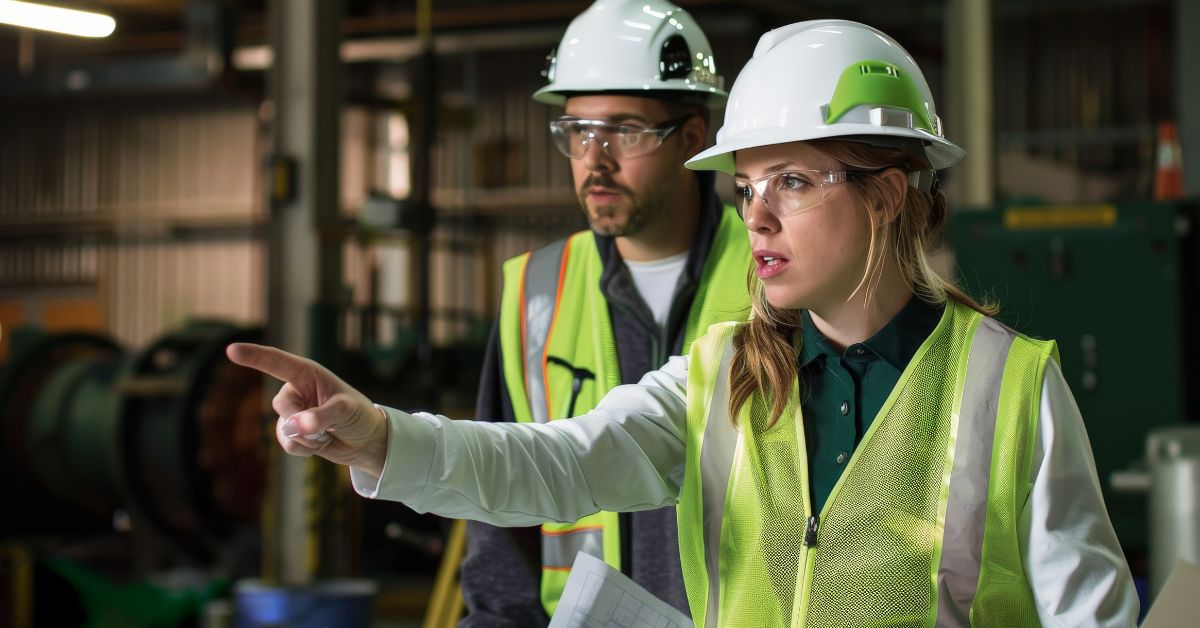The Role of Leadership in Managing Workplace Safety Effectively

Workplace safety doesn’t run on policies alone. It needs people at the top to drive it. Leaders set the direction. They shape how safety is seen, understood and followed. Without strong leadership, even the best systems fall apart.
This blog breaks down how leadership shapes safety in a business. It looks at how the right actions and choices by those in charge can make all the difference.
Why Leadership Matters in Workplace Safety
Leadership drives behaviour. When leaders take safety seriously, others follow. Staff watch what managers do, not just what they say. If leaders ignore safety gear or skip checks, people notice. Safety becomes optional.
On the flip side, when leaders show care and consistency, it spreads. Workers speak up more. Hazards get fixed quicker. People take safety personally. It becomes part of how the job is done.
Setting the Tone from the Top
Leadership is more than giving orders. It’s about creating the right example. When senior figures wear PPE, do walkarounds or speak up about hazards, it sets a clear tone.
That tone shapes culture. It shows that safety isn’t just an add-on. It’s part of the job. Leaders who stay visible and involved show that safety is everyone’s business.
Legal Duties of Senior Leadership
The law doesn’t just focus on workers. It puts clear duties on senior management too. The Health and Safety at Work Act 1974 spells this out. Directors and executives must make sure their workplace is safe.
Training helps meet these duties. One key example is the IOSH Safety for Executives and Directors course. It gives senior staff the legal know-how they need. It also shows how to lead safety from the front. This kind of training isn’t just a tick-box. It can protect lives and keep businesses out of court.
Key Leadership Behaviours That Improve Safety
Some actions matter more than others. There are key habits that make a big difference. Leaders who show these habits often see fewer accidents and better morale.
1. Demonstrating Consistent Commitment
Real commitment means being there, all the time. Not just when there’s a big audit. Leaders must attend briefings. Ask questions. Back safety improvements. Not once. Always.
2. Communicating Clearly and Regularly
Silence can be risky. If staff don’t hear about safety, they assume it’s not important. Leaders must keep the message alive. Emails, talks, posters. It all counts.
Clear messages help avoid confusion. Mixed signals cause mistakes.
3. Leading by Example
Talk is cheap. Doing counts. Leaders who follow procedures, use equipment and stop unsafe tasks show what’s expected. They create habits in others.
4. Making Safety Part of Everyday Decisions
Every meeting, every plan, every budget should ask one thing: is it safe? Leaders need to put safety into daily decisions. Not just once a year during reviews.
5. Empowering Workers to Speak Up
Frontline staff spot problems first. But many stay quiet. Leaders need to change that. Create a space where workers feel safe to talk. No blame. Just action.
That’s how risks get caught early. That’s how lives are saved.
Strong Leadership Builds Safer Workplaces
Workplace safety doesn’t run on luck. It depends on what leaders do, say and prioritise every day. When those at the top lead with care, staff take notice. Safety becomes more than rules on paper. It becomes part of the job.
Strong leadership makes systems work. It fills the gap between policies and practice. A risk assessment means little if leaders ignore it. A safety policy won’t help if nobody hears about it. What turns good systems into real protection is action from the top.
Good Leadership Doesn’t Wait
Effective safety leaders don’t wait for problems. They act early. They check procedures. They ask questions. They challenge bad habits. They make safety visible.
They don’t just show up when there’s a serious incident. They’re present every week. On the floor. In meetings. They ask the right questions: Are people trained? Is equipment safe? Do staff feel confident to raise issues?
This shows that safety is part of the job. Not an extra task. Not a distraction. It becomes part of the company’s identity.
Training Helps Leaders Step Up
Even experienced managers can miss key legal points. That’s why training matters. Courses like “IOSH Safety for Executives and Directors” give leaders what they need to meet the law and lead from the front. It helps turn general concern into real, daily action.
At the same time, training programmes like the IOSH Working Safely course help frontline workers understand risks and essential safety principles. That shared effort is what builds a real safety culture.
Avoid the Common Traps
Leaders can fall into traps. Some focus only on paperwork. Others only react when something goes wrong. Some don’t ask staff for input. These gaps weaken safety.
The fix isn’t hard. It’s about being consistent. Listening. Following the same rules as everyone else. Backing action with resources. Saying safety matters, and showing it does.
The Real Result: Fewer Accidents, Better Work
Good safety leadership protects lives. But it also does more. It reduces downtime. Builds trust. Helps staff feel respected. That makes them work better. It also keeps businesses out of courtrooms, saving time, money and reputation.
Safety isn’t a soft issue. It’s a core part of how work gets done. The best leaders know that. They don’t delegate it. They drive it.
In short, managing workplace safety isn’t just about rules or checklists. It’s about leadership. Clear, honest, active leadership. That’s what keeps people safe. And that’s what every business needs.






